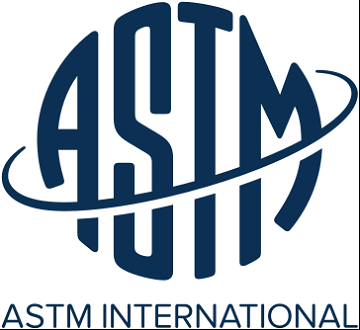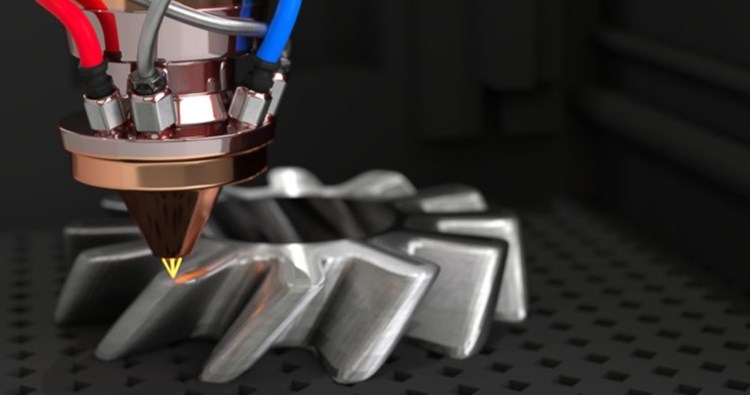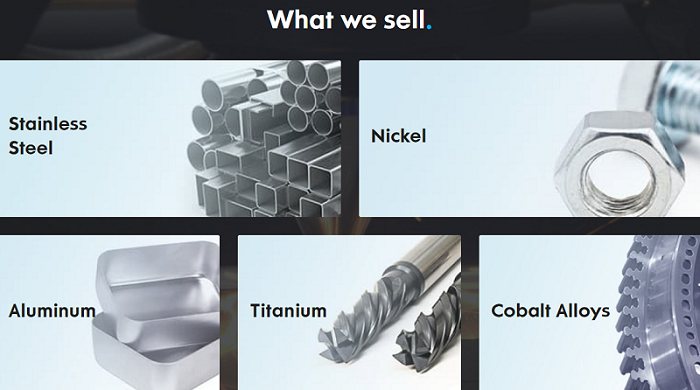3D Printing News Briefs, May 26, 2021: ASTM, Teton Simulation, QuesTek, KBM Advanced Materials, GE Aviation & GE Additive
We’re covering some business in today’s 3D Printing News Briefs, as Teton Simulation appointed a new CEO, and ASTM International awarded its William T. Cavanaugh Memorial Award. QuesTek has received $1 million in funding from the Department of Energy, and KBM Advanced Materials recently launched its formal operations. Moving on, GE Aviation and GE Additive have switched from using casting to metal 3D printing for four parts. Read on for the details!
Teton Simulation Appoints Former VP as CEO
Teton Simulation, which develops simulation software to help enhance the productivity of 3D printed parts, announced that it has appointed its former Vice President of Product, Doug Kenik, to the role of CEO, effective immediately. Kenik is replacing Mike Kmetz, who co-founded the company in 2016, will now be the Chairman of the company’s Board of Directors. Kmetz led the company through its early funding rounds and the launch of its SmartSlice for Cura product. Kenik, who has plenty of experience growing complex businesses, should be able to keep Teton on track for growth. Previously working in Product Management for advanced materials at Autodesk, he used his experience in software as a service for advanced materials and manufacturing processes to help Autodesk commercialize its Generative Design solution.
“I’m excited to move into the Chief Executive Officer role and continue helping Teton to be a premier solution in 3D printing and help our customers print better parts, faster,” Kenik said. “Mike has done an amazing job to help establish Teton’s position in the additive manufacturing market, and now we’re in a great position to grow as the leader. The future of Teton is really bright, and we will continue to differentiate our solutions through intuitive workflows embedded in our customer’s current workflows in order to Print with Purpose.”
ASTM International Announces 2021 Cavanaugh Award
ASTM International‘s Cavanaugh Memorial Award honors William T. Cavanaugh, who was CEO from 1970-1985 and set the organization up as a leader in developing and dispersing voluntary standards. ASTM announced that for this year’s Cavanaugh Award, it was honoring Anthony W. Thornton, director of technical information and senior technology and applications consultant for Micromeritics Instrument Corporation, and Ralph M. Paroli, acting director general for the Metrology Research Center, National Research Council of Canada (NRC). Thornton, who served on ASTM’s committee of standards from 2008-2011 and its Board of Directors from 2011-2013, was recognized for his excellent leadership in international standards development organizations, along with his “outstanding promulgation of standard test methods for powder characterization.” Paroli chaired ASTM’s roofing and waterproofing committee from 2008-2013 and has served as the chair of its cannabis committee since 2017, as well as chairing ASTM International’s board in 2016 during his 2011-2018 tenure. His “outstanding service” in the cannabis and roofing committees, which helped lead to global use of standards and improvement of product quality and consumer safety, is what led to Paroli’s recognition.
ASTM International’s President Katharine Morgan had the following to say about the honorees:
“Tony’s involvement in the international standards community has resulted in a spirit of cooperation throughout the industry. Over the course of his more than 40 years in the industry, Tony has been instrumental in the development, promotion, and use of international voluntary consensus standards.
“Ralph has been instrumental in globalizing the standardization activities of ASTM. His contributions through both committee work and board participation have truly reflected the ASTM mission of helping our world work better.”
DOE Awards QuesTek $1.1 Million
High-performance materials developer QuesTek Innovations, which received a $1.2 million grant from the US Department of Energy (DOE) in January for designing and developing novel materials for turbine blade alloys and compatible coating systems, just announced that it’s received another $1.1 million from the DOE in Small Business Innovation Research (SBIR) Phase II funding. QuesTek will use the funding to design, develop, and qualify a novel materials solution and process for next-generation molten salt reactors, focusing on cold spray processing of bimetallic structures with refractory-based alloys, such as molybdenum, as a surface layer to offer high temperature stability and corrosion resistance. The company is partnering with cold spray, AM powder development, and machine learning process control leader Soluvs Global, and molten salt materials behavior expert Professor Vilupanur Ravi with Cal Poly Pomona, on the research.
“Cold spray is one of the most effective and economical coating technologies to greatly extend the lifetime of next-generation nuclear reactors,” said Dr. Pin Lu, QuesTek Materials Design Engineer and the project’s Principal Investigator. “We are excited for this opportunity to apply our proven computational materials design approach to design novel high performance cold sprayable refractory materials, improving the economic feasibility and performance of future clean energy.”
KBM Advanced Materials Officially Launches Operations
Last week, Ohio-based KBM Advanced Materials, LLC, which finances, sells, and distributes metal powders to the AM, metal injection molding (MIM), and metal spray coating markets, formally launched its operations with an online event to introduce its capabilities to the world. The company wants to revolutionize the distribution of metal powders, and its unique network should help it act as an “inventory bridge” between large metal powder producers and a dispersed advanced manufacturing customer base. With KBM’s business model, producers can schedule production equipment to larger, regular blanket orders from the company, and book jobs, plan R&D, and operate business as usual, safe in the knowledge that KBM has the proper raw material in stock. The company will also offer customers an e-commerce platform that you can’t find at scale from other suppliers or producers, with powder being sold under the producer’s brand name; KBM currently has inventory agreements with Carpenter Additive, Höganäs AB, and Tekna Holdings AS.
“It is essential to us that we partner with companies that are established industry leaders in order for our customers to have the confidence that they are receiving the best possible product and service,” stated Kevin Kempber, the CEO of KBM Advanced Materials. “Our current catalogue of powder producers are some of the most trusted in the industry.”
GE Aviation, GE Additive Switch Parts to Metal AM
For the first time, GE Aviation has shifted production from investment casting to additive manufacturing, based only on cost and time to market, for four turbine parts, thanks to a collaboration with GE Additive. In early 2020, GE Aviation began the selection process during its annual audit of castings, weighing factors like part size and shape, ease of post-processing, and the capabilities of its 3D printers. The audit looked at low-volume replacement parts, as well as production-volume parts for new programs, like the LM9000 land/marine turbine derived from the GE90 turbojet, and quickly came up with a list of 180 cast parts for which they thought 3D printing could save money. A team of GE Aviation and GE Additive engineers, each using their own production and financial models, split up to calculate the ROI on 3D printing each part. When COVID-19 hit, GE Aviation’s additive production facility in Auburn, AL suddenly had available time and machines to start working through the list, which was quickly whittled down to just nine. They looked only at parts that could fit inside a Concept Laser M2 printer, made of either a cobalt and chrome alloy or Ti-64. After prioritizing parts-based engineering resources and the importance of cost savings to the engine program, the final four parts were chosen: adapter caps for the LM9000’s bleed air system, each about 3.5 inches in diameter and six inches tall, made of CoCr to handle hot compressed air from the compressor section, and sharing a base geometry and similar features. The parts were one-to-one replacements, without any redesign or parts consolidation, and the engineering team believes that these four 3D printed parts will cut up to 35% of their cost.
“This is a game-changer. This is the first time we did a part-for-part replacement, and it was cheaper doing it with additive than casting. To make sure we demonstrated cost competitiveness, we had four outside vendors quote the parts, and we still came in lower with additive manufacturing,” said GE Aviation Additive Manufacturing Leader Eric Gatlin.
Subscribe to Our Email Newsletter
Stay up-to-date on all the latest news from the 3D printing industry and receive information and offers from third party vendors.
You May Also Like
Profiling a Construction 3D Printing Pioneer: US Army Corps of Engineers’ Megan Kreiger
The world of construction 3D printing is still so new that the true experts can probably be counted on two hands. Among them is Megan Kreiger, Portfolio Manager of Additive...
US Army Corps of Engineers Taps Lincoln Electric & Eaton for Largest 3D Printed US Civil Works Part
The Soo Locks sit on the US-Canadian border, enabling maritime travel between Lake Superior and Lake Huron, from which ships can reach the rest of the Great Lakes. Crafts carrying...
Construction 3D Printing CEO Reflects on Being Female in Construction
Natalie Wadley, CEO of ChangeMaker3D, could hear the words of her daughter sitting next to her resounding in her head. “Mum, MUM, you’ve won!” Wadley had just won the prestigious...
1Print to Commercialize 3D Printed Coastal Resilience Solutions
1Print, a company that specializes in deploying additive construction (AC) for infrastructure projects, has entered an agreement with the University of Miami (UM) to accelerate commercialization of the SEAHIVE shoreline...


































